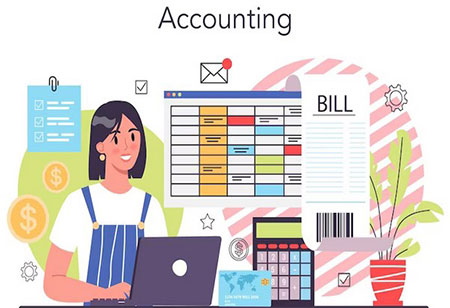 Magazine
Magazine

In today's fast-paced business landscape, traditional accounting practices often struggle to keep up with the demands of real-time financial management. To address this challenge, a new approach known as continuous accounting has emerged.
Continuous accounting revolutionises the way financial processes are carried out, offering real-time insights, increased efficiency, and enhanced decision-making capabilities. Of course, this is a practice best handled by professional accountants, such as Howlader & Co.. This way, you can make sure that you don’t miss anything and that your day-to-day finances are on point.
This article serves as a short guide to continuous accounting, exploring its definition, benefits, and implications for businesses.
What Is Continuous Accounting?
Continuous accounting is an innovative approach to financial management that aims to automate and streamline accounting processes on an ongoing basis, rather than relying on a monthly or quarterly reporting cycle. Unlike the traditional "close, consolidate, and report" model, this method involves the continuous capture, validation, and analysis of financial data. It leverages technology and automation to accelerate financial workflows, allowing for faster and more accurate financial reporting.
Benefits of Continuous Accounting
Real-time Financial Insights
One of the primary benefits of continuous accounting is the ability to gain real-time visibility into financial data. By automating data capture and analysis, businesses can access up-to- date financial information whenever needed. This enables faster decision-making, proactive financial management, and the ability to address potential issues promptly.
Enhanced Efficiency
Continuous accounting reduces the time and effort spent on manual, repetitive tasks. Automation streamlines processes such as data entry, reconciliations, and transaction matching, freeing up accounting professionals to focus on more value-added activities. This improves overall efficiency and productivity within the finance function.
Increased Accuracy and Compliance
The automated nature of continuous accounting minimises the risk of errors and inconsistencies in financial data. By eliminating manual data entry and leveraging validation rules, businesses can ensure the accuracy and integrity of their financial information This is particularly crucial for maintaining compliance with regulatory requirements and industry standards.
Agile Decision-making
Continuous accounting provides the agility required to respond quickly to changing business conditions. With real-time financial insights, businesses can make informed decisions promptly. Whether it's adjusting budgets, reallocating resources, or evaluating the financial impact of new opportunities, continuous accounting equips businesses with the necessary information for agile decision-making.
Collaboration and Transparency
By centralising financial data in real-time, continuous accounting promotes collaboration and transparency across departments. With shared access to accurate and up-to-date financial information, stakeholders can work collaboratively, enabling cross-functional decision- making and fostering a culture of transparency and accountability.
How To Perform Continuous Accounting
To effectively implement continuous accounting in your organisation, consider the following steps:
1. Hire A Professional Accountant
While implementing continuous accounting practices can significantly enhance efficiency and accuracy in financial management, seeking the expertise of a professional accountant can further optimise your continuous accounting processes. Some of the benefits include:
● Specialized Knowledge and Experience
● Strategic Financial Guidance
● Compliance and Regulatory Assistance
● Audit Support
● Focus on Core Business Functions
2. Utilise Accounting Software and Automation Tools
Invest in accounting software that supports automation and integrates with other systems such as ERP (Enterprise Resource Planning) or CRM (Customer Relationship Management). These tools streamline data entry, automate transaction matching and reconciliations, and enable real-time data capture. Leverage features such as bank feeds to automatically import transactions, reducing manual effort and ensuring data accuracy.
3. Establish Real-time Data Integration
To perform continuous accounting, it's crucial to have seamless data integration across various systems and applications. This integration allows for the automatic flow of data, eliminating the need for manual data entry and ensuring consistency across different platforms. Implement APIs (Application Programming Interfaces) or data connectors to enable smooth data transfer between systems, such as sales, procurement, and finance.
4. Implement Continuous Closing Practices
Traditionally, month-end or quarter-end closings have been time-consuming processes. In continuous accounting, the focus is on reducing the time and effort required for these closings. Implement a rolling closing process where financial data is continuously processed and analysed throughout the period, rather than waiting until the end. This approach allows for faster and more accurate financial reporting.
5. Leverage Data Analytics and Visualization Tools
Data analytics plays a significant role in continuous accounting. Utilize data analytics tools to extract meaningful insights from financial data, identify trends, and detect anomalies or potential risks. Visualization tools can help present financial information in a visually appealing and easily understandable format, enabling stakeholders to make informed decisions quickly.
6. Foster Collaboration and Communication
Continuous accounting emphasizes collaboration and communication across departments. Encourage cross-functional teams to work together, sharing financial data and insights in real-time. This promotes transparency, enhances decision-making processes, and ensures alignment between financial goals and overall business objectives. Implement a centralized communication platform or project management tool to facilitate collaboration and maintain a consistent flow of information.
7. Continuous Monitoring and Reporting
Continuous accounting involves ongoing monitoring of financial data to identify and address issues promptly Set up real-time dashboards and reports that provide key performance indicators (KPIs) and metrics relevant to your business. This allows stakeholders to track financial performance, detect variances, and take immediate corrective actions if needed. Regularly review and analyze financial reports to gain insights into trends and make data- driven decisions.
8. Embrace Continuous Improvement
Continuous accounting is a dynamic process that should be continuously evaluated and improved. Regularly assess your accounting workflows, identify areas for optimization, and implement changes to enhance efficiency and accuracy. Stay updated with emerging technologies and industry best practices to leverage new opportunities for automation and process improvement.
We use cookies to ensure you get the best experience on our website. Read more...